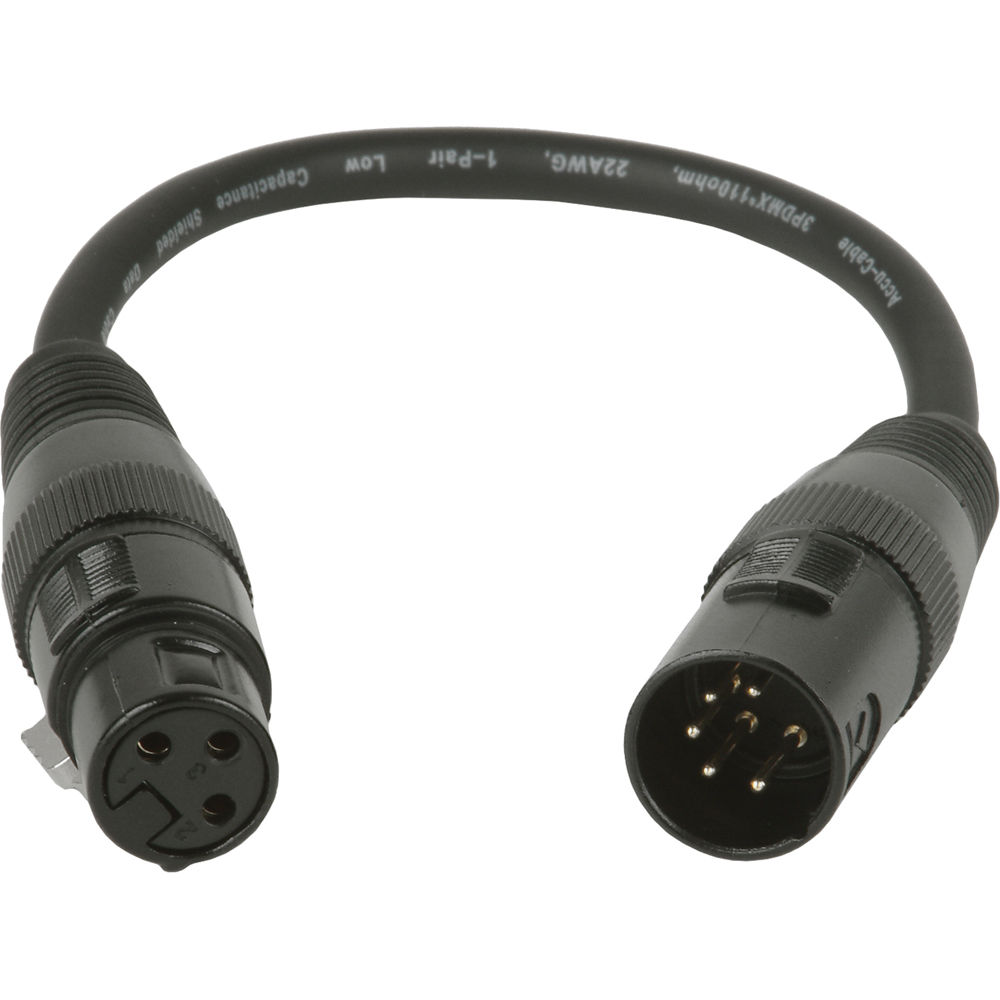If you do a lot of Lighting, you’re probably familiar with DMX (Digital Multiplex 512) cable. But what is the difference between 3, and 5 Pin DMX connectors? To answer this question, we need to look at why we have DMX to begin with.
When DMX 512 came along it standardized the method for controlling light dimmers, lighting instruments, consoles, and even fog machines with addressing. By giving an instrument an address, the console could communicate with the individual instrument. But before DMX, all of these pieces had different in and out cables or needed to be manned by a stagehand waiting for a cue. Now DMX is the standard in running lights and effects, with 3 pin or 5 pin DMX connectors. But why are their different types of cable in the first place?
With a 3 and 5 Pin Cable, Pin 1 is the Ground, Pin 2 is Data Negative, Pin 3 is Data Positive, Pin 4 is Data Negative 2, and Pin 5 is Data Positive 2. With all that said though there isn’t a real difference between 3 and 5 pin DMX. The second Data line doesn’t add any additional data or bandwidth, nor is it required to making moving lights move correctly. You can even convert a 5-pin cable to a 3-pin cable, and a 3-pin cable to a 5-pin without a problem. They work the same and won’t result any differences.

